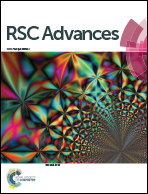Plasma-deposited hydrogenated amorphous silicon films: multiscale modelling reveals key processes†
Abstract
The underlying physical and chemical mechanisms and role of the plasma species in the synthesis of hydrogenated amorphous silicon (a-Si:H) thin films were studied numerically with the aim to reveal the key growth processes and, hence, to ensure a much higher level of control over the film structure and properties. A sophisticated multiscale model developed on the basis of self-consistent surface and plasma kinetics sub-models, including one-dimensional plasma sheath formalization, was used to study the nucleation, growth, and structure formation of amorphous hydrogenated silicon films in a reactive low temperature plasma environment containing a mixture of silane, hydrogen, and argon gases. The model considers a whole range of key processes, and the effect of surface temperature, ion flux, energy and other plasma-sheath parameters are examined in detail. The leading role of hydrogen in structure formation is confirmed and moreover, key processes critically important for designing and discovering novel materials with important properties are identified. The dominant role of SiH3 as the main precursor in the deposition of amorphous hydrogenated silicon films is proved, and routes for the efficient, technique-enabled control are specified. The presented results were compared with the experimental data, and a good agreement with the experimental findings obtained for the deposition of amorphous hydrogenated films has been demonstrated.


 Please wait while we load your content...
Please wait while we load your content...